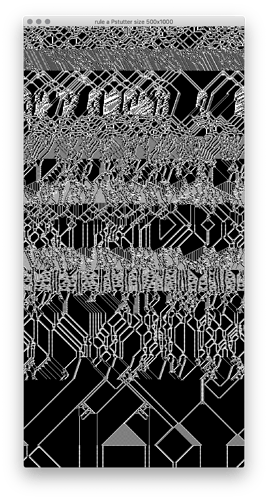hey, ive just used the Pca1 Pattern Class now and was trying to implement your Routine from the Youtube Tutorial in a Pbind and need some help.
(
SynthDef(\test, {
arg out=0, pan=0, amp=0.35, freq=150;
var env = EnvGen.kr(Env.perc(0.01,0.85), doneAction:2);
var sig = Saw.ar(freq);
sig = Pan2.ar(sig, pan, amp);
Out.ar(out, sig);
}).add;
)
(
Pdef(\test,
Pbind(
\instrument, \test,
\dur, 1,
\cellular, Pn(Plazy {|event|
Pca1({2.rand}!9, 90)
}, inf),
\root, 0,
\octave, 5,
\scale, Scale.lydian,
/*
\degree, Pn(Plazy {|event|
event[\cellular].do { |gate, i|
if(gate == 1, {
i + event[\scale].degrees
});
}
}, inf).trace,
*/
\degree, Pn(Plazy {|event|
event[\cellular] * event[\scale].degrees
},inf).trace,
\amp, 0.05,
)
).play;
)
I think when the result of Pca1 is just multiplied with the Scale degrees its not yielding the same results. Especially when you increase the size of the Pca1 array you dont get higher note values, as you did in the Tutorial.
Do you have an idea how i can implement the Routine for the Scale mapping of Pca1 in a Pbind?
I was also trying with Prout and loop but i dont need the waittime. it should always give a new value with each new duration.
thanks alot 



 … so not a lot of people take this approach.
… so not a lot of people take this approach. i hope we can meet somewhere again.
i hope we can meet somewhere again.